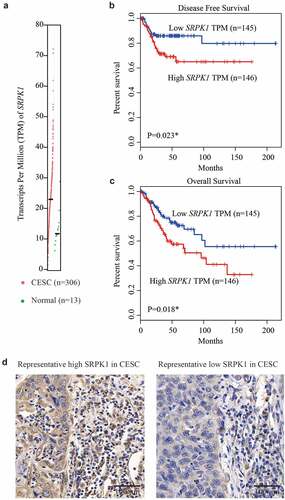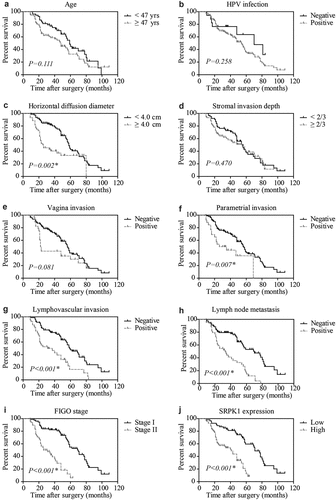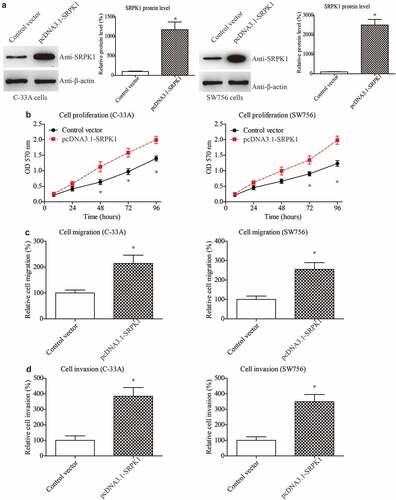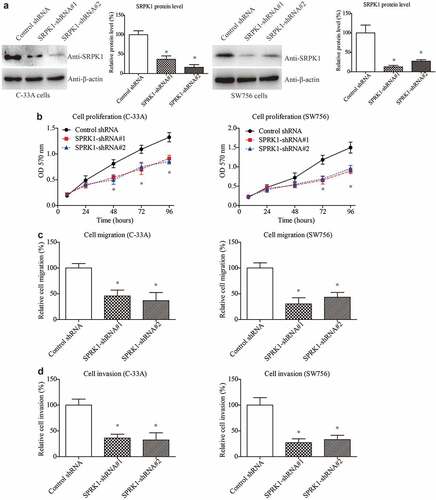Figures & data
Figure 1. mRNA and protein expression of SRPK1 in CESC samples.

Table 1. Correlation between SRPK1 protein expression and clinicopathologic characteristics of CSCC patients
Figure 2. Disease-free survival analyses.

Table 2. Disease-free survival (DFS) information of enrolled CSCC patients
Table 3. Overall survival (OS) information of enrolled CSCC patients
Figure 3. Overexpressing SRPK1 promotes CESC proliferation, migration, and invasion.

Figure 4. SRPK1 interference results in attenuated CESC viability.

